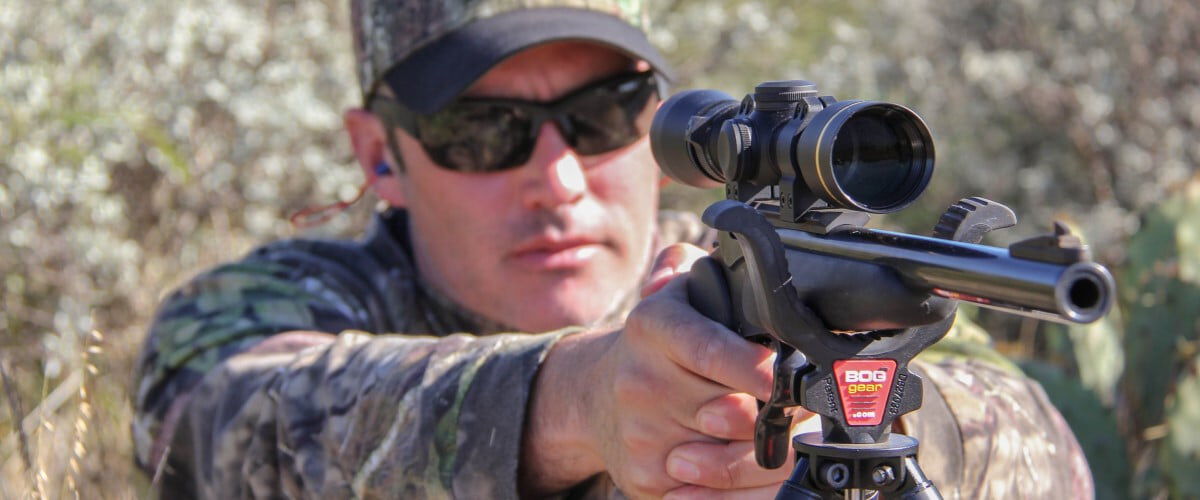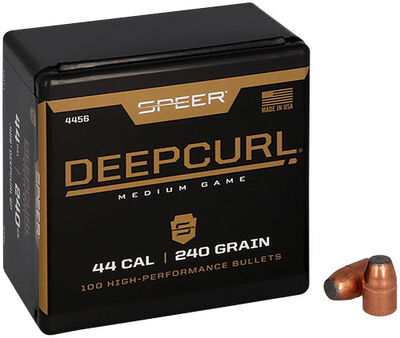
Choosing to hunt with a handgun inherently means taking on the challenge of getting closer to game before pressing the trigger. However, there’s no reason to handicap yourself further by choosing a bullet or cartridge that’s not up to the job. Let’s dive into what’s most important and reveal the best bullets for handgun hunting.
Best Handgun Bullets & Cartridges
I once killed a deer with an inexpensive 44 Magnum JSP, but it wasn’t a clean kill, and I won’t do that again. I’ve since learned to look for a well-constructed bonded bullet designed for the task. One of my favorites is Speer’s DeepCurl. It offers everything I need for big game hunting. The electrochemically bonded jacket will not separate from the core, and that equates to deep, straight-line penetration. Pre-formed petals initiate expansion and result in consistent upsets and massive energy transfer. Those are critical factors when choosing the right hunting bullet. Place a Deep Curl in the vitals and you can expect reliable, fast results.
You can spend a lot of time debating which handgun calibers are best for hunting, but there are some solid options that work well for a wide variety of game. For deer-sized game, loads from 357 Magnum to 500 S&W work, but it’s hard to beat the versatility of the classic 44 Magnum. I’ve taken several deer with it and have never felt that it lacked power to put whitetails down out to 100 yards, provided the shot was well-placed. Larger rounds like the 454 Casull shoot flatter and pack more punch, but they aren’t as easy to shoot.
Choosing the right handgun is a critical first step, and you must match caliber and action type to the animal. Traditionally, handgun hunters have chosen a revolver or single-shot, and both are good. But today’s crop of semi-auto pistols in 10mm Auto offer a list of suitable options as well, and they are light and easy to carry. A 1911-style 10mm with a 5- or 6-inch barrel, reflex sight, and high-quality hunting ammunition is great for deer where legal. Those also make great hog guns, especially when you’re hunting over bait or dogs where shots might be close and quick.

Gear & Guns
One of the great advantages of hunting with a handgun is that, in a proper holster, they allow you to have your hands free. This is great when walking in steep country or while climbing into or out of a tree stand (provided the holster does not impede movement). Hog, bear and mountain lion hunters who use hounds also like handguns because the shots are generally close and a holstered pistol or revolver leaves the hands free to catch dogs.
Handgun hunting certainly isn’t for everyone, but those who take up the mantle will be rewarded with a lifetime of enjoyment. It requires great skill as a hunter to get close to game and make an effective shot with a handgun, but it is possible. Practice is key, so plan on spending time at the range, and choose the best bullets for the job.